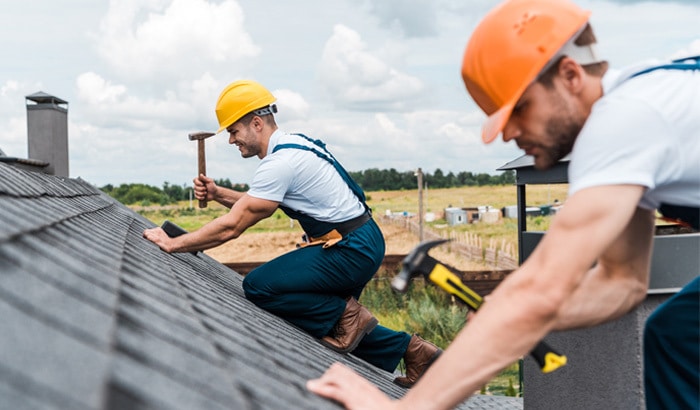We’re staying home a lot more than usual these days due to the pandemic, making it the perfect time for roof repairs.
Utah features some extreme temperatures and unpredictable weather, though, so is it wise, and more importantly, safe? Right now we’re experiencing the dog days of summer, and soon we’ll get the brisk autumn rain before feet of frozen snow in winter.
Is it possible to fix a roof during bad weather? Find out below.
Roof Repair in the Heat
You might face some challenges and dangers if you attempt to repair your roof in the middle of the hottest summer day. Summer might give you more time to work on roof repairs, but there are also hazards.
- Oppressive heat can be dangerous for you or a roofing professional
- Metal roofing can get hot enough to burn at a touch
- Shingles can grow soft and even melt under hot conditions, as well as other materials, such as a sealant, that you might use.
Roof Repair in the Rain or Snow
The ideal weather conditions for repairing a roof is a warm, calm day, but that may not work with your schedule. Although the rainy season isn’t the best time, you can still have repairs performed in the rain, as long as it’s not storming. This means that if a drizzle suddenly pops up while you're working or having a professional doing repairs, there shouldn’t be an issue. If the situation does occur, it’s important to cover your materials and prioritize safety.
Water Damage Effects
Your main concern when roofing in the middle of a storm, aside from wind or lightning, should be water damage. Unshingled roofs are exposed, so rainwater can affect the roofing structure. Should you leave it until the rain stops or shingle it in the rain? Here are some factors to consider:
- Shingles won’t fasten well if done in heavy rain, but there’s also an increased risk of fungal and organic growth on your roof or in the interior. Humidity is a factor when installing roofing materials and shouldn’t be attempted in high humid conditions. The inner components of your roof are susceptible to the effects of water damage, and if humidity is high, it can cause the shingles to warp and bulge. Further, they could easily slip off if fastening materials are done during colder weather.
- Improper installation can void a warranty. If the installation is done in potentially bad weather, a roofing manufacturer may void the warranty, even if they provide service warranties. Technically, they have a set of advised conditions for installing roofing materials to ensure the best outcome and minimize any damage or installation issues.
- Worker danger increases when the installation is done in rainy weather. Slippery conditions will be a bigger problem due to ice sheets forming on your roof from flowing water during the winter. Also, if hail falls, that can be a significant problem in the summer.
Contact The Roof Doctor
The Roof Doctor specializes in roof repairs, and we’re more than happy to assist you. We’ll follow the best working conditions when we fix your roof.
We serve Salt Lake city and County, as well as surrounding counties. Our licensed roofing contractors are extra cautious in these unprecedented times, so please reach out and get a free estimate today.


